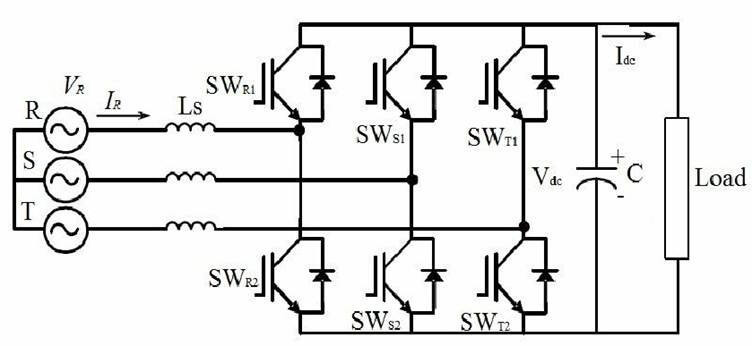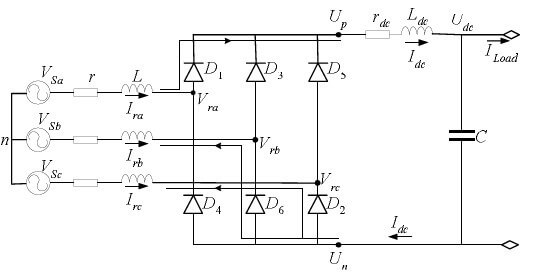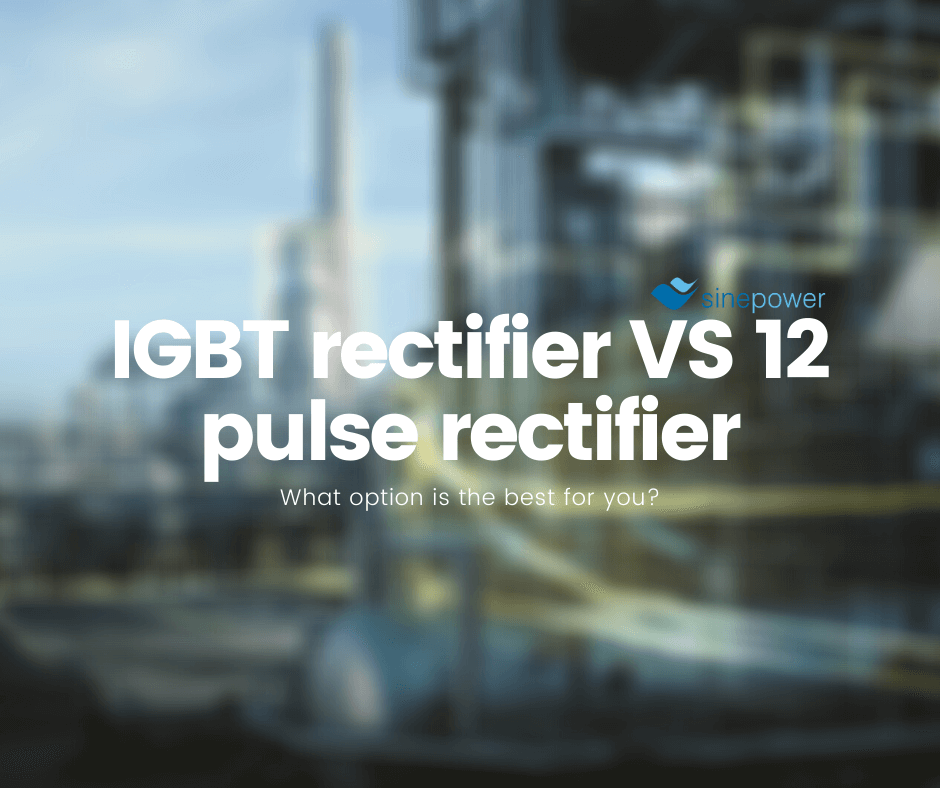Over 10 years we help companies reach their financial and branding goals. Engitech is a values-driven technology agency dedicated.
411 University St, Seattle, USA
engitech@oceanthemes.net
+1 -800-456-478-23
At Sinepower, we know that finding the right product can be an exhausting task. Thus, in this brief article, we would like to specify the main differences between an IGBT rectifier and a 12 pulse rectifier so that when the time comes to choose the best power unit you can make an educated choice.
IGBT stands for Insulated Gate Bipolar Transistor. It is a three-terminal electronic device that is used as a switch. IGBTs have a pretty good current handling capacity when compared to standard BJTs (Bipolar junction transistor) and MOSFETs (metal–oxide–silicon transistor). IGBTs are devices whose switching is fully controlled electronically.
IGBT Rectifier:

6 Pulse Rectifier:

The main advantage of the IGBT Rectifier is the fact it produces a sinusoidal input current with low harmonics at the input with unity Power Factor through most of the load range. The 4 quadrant operation is also an important plus due to its versatility and better response.
In conclusion:
IGBT rectifiers have “cleaner” input currents, which translates into better performance with a small cost in efficiency. In general, they have less ripple factor and better harmonics performance. They easily comply with all the Grid Harmonic Injection regulations, in fact exceeding all the requirements. IGBTs work under more recent technology.
Overall, I could say they are more cost-efficient long-term.
At Sinepower, we use IGBT technology in our SFC and in our V2G chargers, while most of the competition out there still opt for the older 6 and 12 pulse rectifiers.
If you need this solution for your business, get in touch with us right now.
| Cookie | Duration | Description |
|---|---|---|
| cookielawinfo-checbox-analytics | 11 months | This cookie is set by GDPR Cookie Consent plugin. The cookie is used to store the user consent for the cookies in the category "Analytics". |
| cookielawinfo-checbox-functional | 11 months | The cookie is set by GDPR cookie consent to record the user consent for the cookies in the category "Functional". |
| cookielawinfo-checbox-others | 11 months | This cookie is set by GDPR Cookie Consent plugin. The cookie is used to store the user consent for the cookies in the category "Other. |
| cookielawinfo-checkbox-necessary | 11 months | This cookie is set by GDPR Cookie Consent plugin. The cookies is used to store the user consent for the cookies in the category "Necessary". |
| cookielawinfo-checkbox-performance | 11 months | This cookie is set by GDPR Cookie Consent plugin. The cookie is used to store the user consent for the cookies in the category "Performance". |
| viewed_cookie_policy | 11 months | The cookie is set by the GDPR Cookie Consent plugin and is used to store whether or not user has consented to the use of cookies. It does not store any personal data. |
